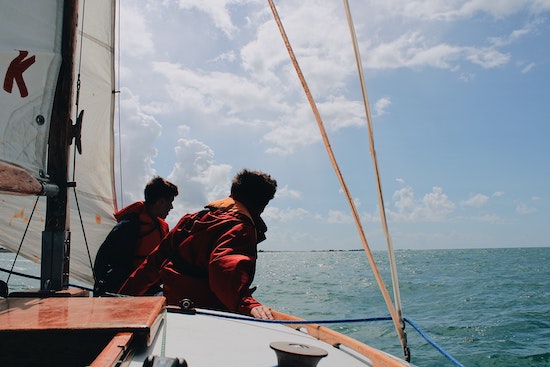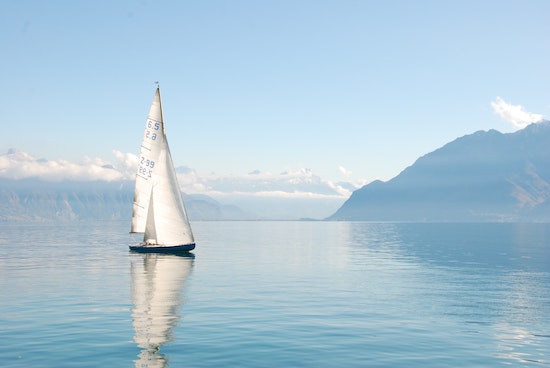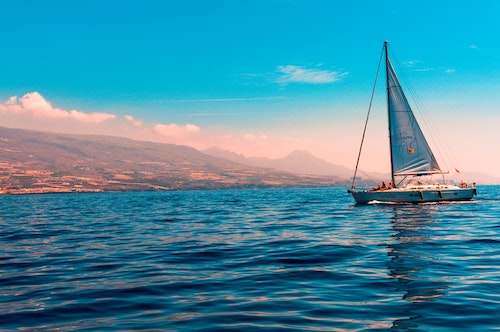Sailing is an exhilarating adventure that offers the freedom to explore the oceans and discover new horizons. However, with any adventure comes an inherent level of risk, which raises the question of how safe sailing is. While sailing is generally considered a safe activity, it’s essential to understand the potential risks and prepare accordingly to sail safely. We’ll discuss the dangers of sailing, how safe it is to sail around the world, whether it’s safe to sleep while sailing, potential sailing accidents, and how common they are. Whether you’re an experienced sailor or a novice, it’s crucial to be aware of the risks involved and take the necessary precautions to ensure a safe sailing experience.
Introduction
Sailing can be an exhilarating and enjoyable experience for many water enthusiasts, but the question remains: is sailing dangerous? The short answer is that yes, there are inherent risks involved when navigating the open waters. However, with proper planning, navigation, and safety measures, the dangers can be significantly minimized.
One of the biggest potential dangers when sailing is the risk of capsizing or sinking. This could happen due to various reasons such as bad weather, hitting a rock, or a collision with another boat. It is therefore important to ensure that the vessel is seaworthy and equipped with life preservers, life rafts, and an emergency communication system to help increase the chances of survival in the event of an accident.
Another factor that contributes to the risk of sailing is the unpredictable and often turbulent nature of the sea. Strong winds, tides, and currents can make sailing challenging, especially for inexperienced sailors. One possible way of reducing this risk would be to check the weather forecast prior to sailing, and also having a clear understanding of how to navigate in different weather conditions.
- Additionally, the importance of having a skilled and competent crew cannot be overstated. It can be beneficial to have a qualified skipper who is experienced in navigating different weather and sea conditions. Also, all members of the crew must be familiar with the various safety procedures, and should know how to respond in the event of an emergency.
- A proper safety briefing before setting out to sail is always necessary in order to make sure that everyone on board is aware of what to do in case something goes wrong. An emergency action plan should also be prepared and reviewed by all crew members.
How Safe Is Sailing Around the World?
Sailing around the world is a dream for many adventurous people who want to explore different destinations across the globe. This type of trip is not only about the final destination but also the journey itself. Whether you are a professional sailor or enjoying sailing as a hobby, safety is a crucial factor that needs to be considered when planning a sailing trip around the world.
Before embarking on a sailing adventure, it’s essential to ensure that your boat is well-maintained and equipped with the necessary safety equipment. Some of the essential equipment includes life jackets, distress signals, fire extinguishers, and GPS systems. You must also ensure that all your systems, including navigation and communication, are in proper working condition.
One other critical factor to consider when sailing around the world is weather conditions. Different parts of the world experience different weather patterns, and it’s essential to be aware of them. In some instances, sailors may need to postpone their trip due to unfavorable weather conditions. It’s also inevitable to encounter rough weather when sailing, and in such cases, it’s essential to have experienced sailors on board who can handle the situation.
- However, even with proper preparation, there are still chances of accidents occurring. For instance, sailing around the world increases the likelihood of equipment failure and collisions with other vessels.
- In addition, illnesses such as sea sickness and injuries from falls or slips are common occurrences when sailing.
It’s, therefore, essential to have a medical kit on board and have basic first aid knowledge. You can also take precautions such as limiting your movement on board to reduce the chances of slips and falls.
| Common Sailing Accidents | Preventive Measures |
|---|---|
| Collision with other vessels | Ensure that navigation systems are working correctly, and always be aware of other vessels in the vicinity. |
| Equipment Failure | Ensure all your systems are well maintained, and you have backup equipment in case of failure. |
| Sea Sickness | Take anti-sea sickness medication and avoid consuming alcohol or spicy foods that may worsen the condition. |
Is It Safe to Sleep While Sailing?
Sailing can be one of the most incredible experiences in one’s life, but safety always comes first. As much as it may sound appealing to take a nap while sailing, the question persists: is it safe to do so?
The answer depends on several factors such as the sailing environment, weather conditions, experience of the crew, and more. Most experienced sailors would advise against sleeping while sailing, especially when sailing solo or in unfamiliar waters. As tempting as it may be, sleeping while sailing poses a risk, and here’s why.
- Unexpected weather conditions: Weather conditions can change rapidly while sailing, and one can never be too sure when a storm might hit. It’s crucial to have someone on deck on the lookout to ensure the safety of everyone onboard.
- Collision with other boats: Another boat can approach at any moment, and collision can be highly likely, especially in busy waters. Being alert and ready to take action is imperative to remain safe.
- Sudden malfunction: If the boat malfunctions unexpectedly, it can lead to a dangerous situation. There should always be someone onboard who can fix the issue or call for help if necessary.
It’s not to say that one should never sleep while sailing, but it’s crucial to ensure that there’s someone else awake and alert while doing so. Two-person watches are a common approach to ensure that someone is always on deck and watching over the boat and its crew. Moreover, it’s advisable to have proper safety equipment such as life jackets, GPS, and communication devices onboard.
What Can Go Wrong When Sailing?
Sailing can be an exhilarating experience but it also comes with its own set of risks. There are a number of things that can go wrong when sailing and it is important to be aware of them to ensure your safety while out on the water.
1. Weather Conditions: The weather can be unpredictable and can change suddenly. Strong winds, thunderstorms, and heavy rains can make sailing difficult and dangerous. It is important to keep an eye on weather forecasts and be prepared for any changes in weather patterns.
2. Equipment Failure: Boats are complex machines and if any part of the equipment fails, it can cause major problems. Regular maintenance and check-ups can prevent equipment failure. In the event of equipment failure, it is important to have proper safety measures in place to deal with the situation.
3. Collisions: Collisions with other boats, rocks, or other objects can be extremely dangerous. It is important to stay alert and be aware of the surroundings to avoid such situations. In case of a collision, it is important to take immediate action to avoid any further damage or injuries.
4. Navigation: Navigation is a critical aspect of sailing and any mistakes in navigation can cause major problems. It is important to have proper navigation skills and equipment to ensure that you stay on course and avoid any danger.
5. Overboard: Falling overboard can be a major risk when sailing. It is important to wear proper safety gear like lifejackets and harnesses to prevent such situations. In case of someone falling overboard, it is important to act quickly and effectively to ensure their safety.
6. Health: Sailing can be physically demanding and stressful. It is important to be in good health and stay hydrated to avoid any health issues while out on the water.
How Common Are Sailing Accidents?
Sailing is an exciting and thrilling activity but it comes with its own set of risks. Accidents can happen on water just as easily as they do on land. How common are sailing accidents and what are some of the common causes of them?
According to the US Coast Guard, boating accidents account for over 4,000 injuries and 600 deaths every year. While sailboats may not be the most common type of watercraft involved in accidents, they are not immune to them. In fact, sailboat accidents can happen due to a variety of reasons such as poor weather conditions, equipment failure, collisions with other boats, and human error.
- Poor weather conditions can quickly turn a relaxing sail into a terrifying experience. High winds, heavy rain or fog can disorient sailors and drastically reduce visibility. This can easily lead to an accident if sailors are not prepared and/or experienced enough to handle these situations.
- Equipment failure is another common cause of sailing accidents. This can range from something as simple as a broken mast to serious engine or navigation instrument failure. It is important for sailors to regularly maintain and inspect their equipment before setting sail.
- Collisions with other boats are also a risk when sailing, especially in congested waterways. It is important for sailors to be aware of their surroundings and other boats in the vicinity to avoid collisions.
- Human error can be the most dangerous cause of sailing accidents. This can happen due to inexperience, alcohol consumption or recklessness. It is important for sailors to take proper precautions and always sail safely.
While sailing accidents can be serious, they are relatively uncommon compared to other types of accidents. The vast majority of accidents can be prevented by taking proper safety measures and precautions. If you are unsure about the safety of sailing, it is best to seek guidance from experienced sailors, take a sailing safety course, and always stay up-to-date on weather conditions.
| Type of Sailing Accident | Percentage of Total Accidents |
|---|---|
| Collision with another boat | 25% |
| Equipment failure | 20% |
| Grounding | 15% |
| Capsizing | 10% |
| Man overboard | 10% |
| Weather-related | 5% |
| Other | 15% |
In conclusion, sailing can be a safe activity as long as sailors take proper precautions and are aware of the potential risks involved. While accidents do happen, they are relatively uncommon and can be prevented by following safety guidelines. Always stay informed and be prepared before setting sail to ensure a safe and enjoyable sailing experience.










